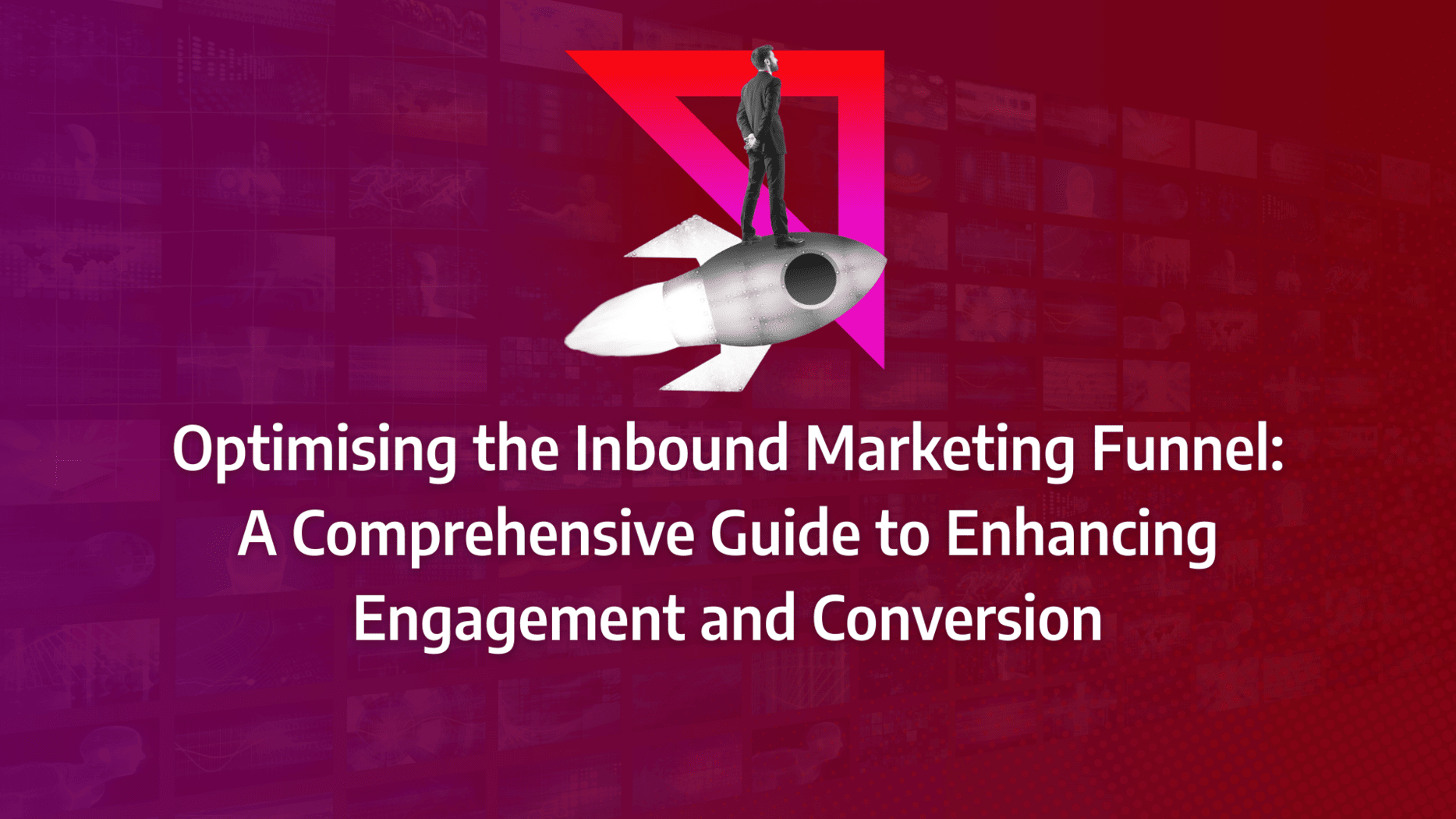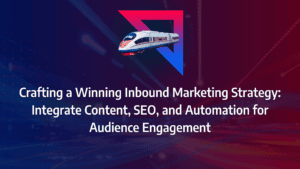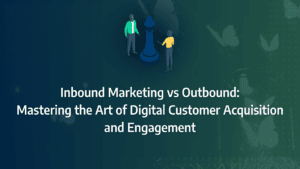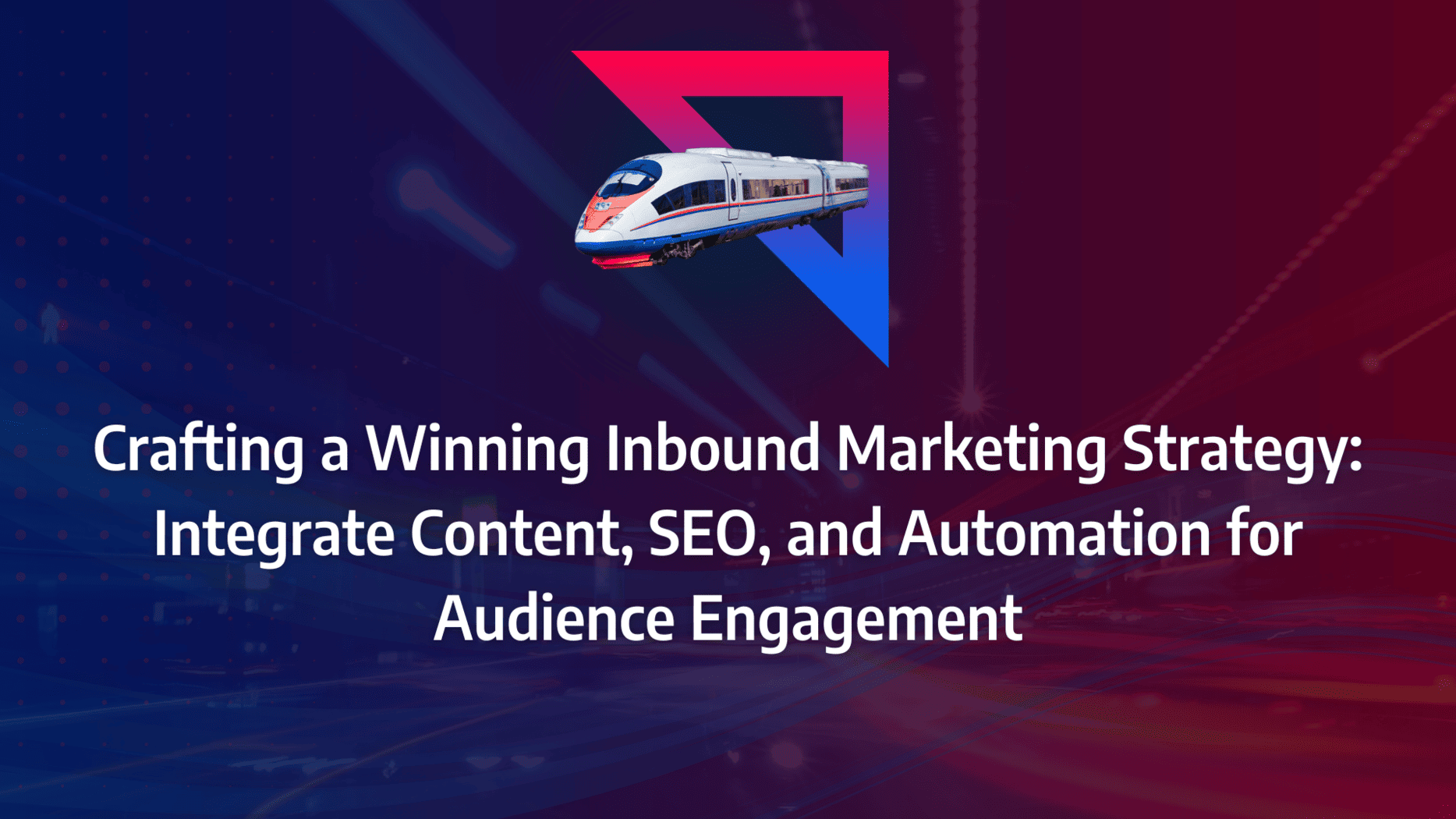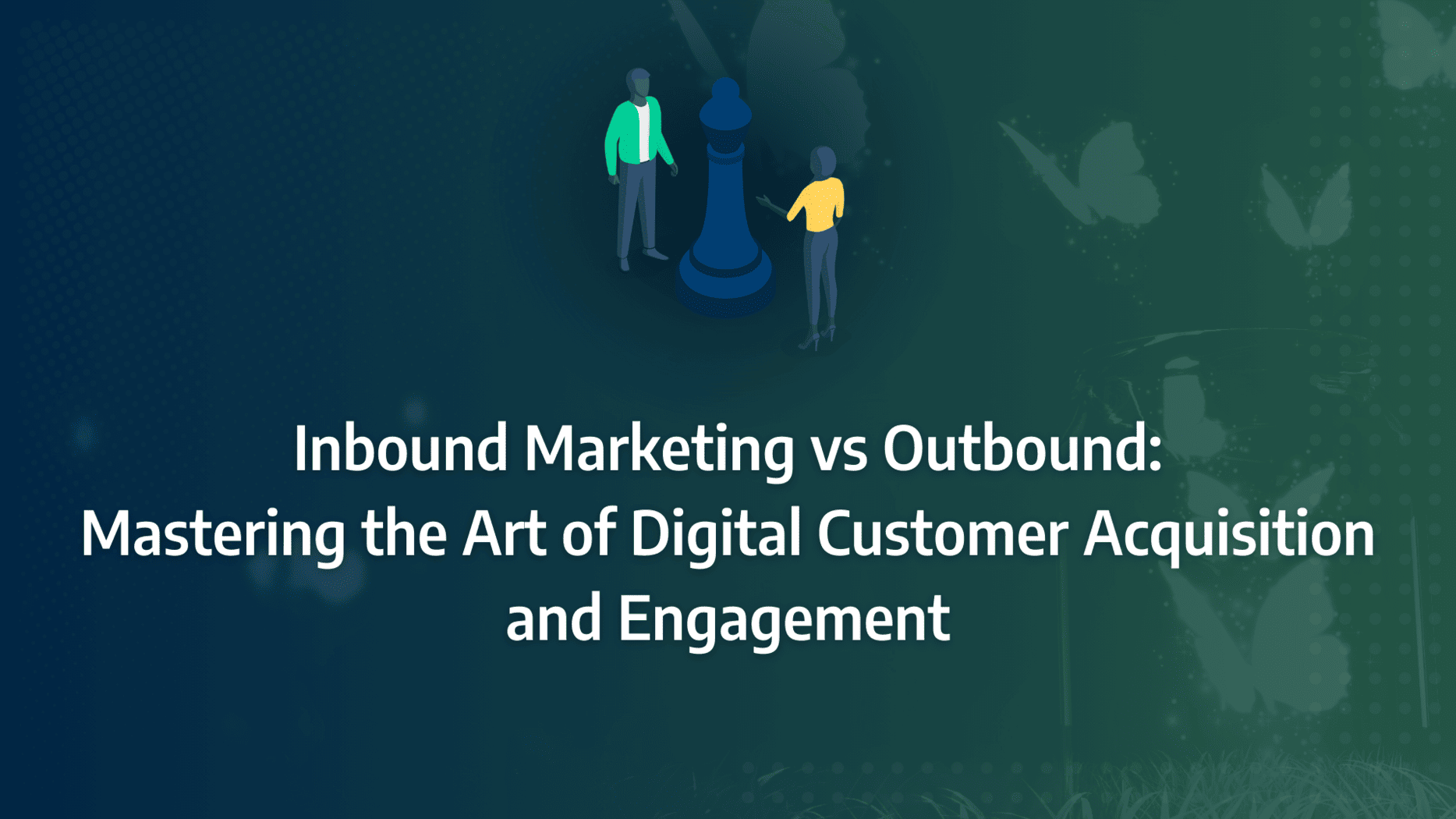Navigating the complexities of an inbound marketing funnel can be daunting. With each stage—awareness, consideration, and decision—demanding precise strategies and tactics, it’s easy to feel overwhelmed. But what if you had a roadmap that broke down these stages into clear, actionable steps?
This guide is your solution. In this post, we’ll delve into the nitty-gritty of optimising your inbound marketing funnel, from aligning content with each stage to leveraging tools and analytics for maximum impact. You’ll discover how to nurture leads effectively, improve conversion rates, and track the right metrics to ensure your funnel is always performing at its best.
- Understanding Funnel Stages: Recognise the distinct stages of the inbound marketing funnel—awareness, consideration, and decision—and tailor your strategies accordingly.
- Content Alignment: Ensure your content is aligned with each stage of the funnel to address the specific needs of potential customers and guide them through the buyer’s journey.
- Optimising with Tools and Analytics: Utilise marketing automation tools and analytics to monitor and optimise your funnel’s performance at every stage.
- Effective Lead Nurturing: Implement personalised lead nurturing strategies to build stronger relationships and guide prospects towards conversion.
- Conversion Rate Optimisation: Focus on improving conversion rates through A/B testing, landing page design, and enhancing user experience.
- Tracking Key Metrics: Regularly track essential KPIs to assess your funnel’s effectiveness and identify areas for improvement.
- Overcoming Challenges: Address common challenges in managing an inbound marketing funnel, such as improving lead quality and preventing funnel leakage.
What is the Inbound Marketing Funnel?
The inbound marketing funnel provides a step-by-step visualisation of the process customers follow when they decide to purchase a product. This insightful marketing strategy helps your team to generate, nurture, and retain leads effectively.
What Matters Most?
From our experience, clients often discover that building a loyal audience through valuable content is crucial before attempting to push them through the funnel. Typically, a permission-based approach, where trust and permission are earned before moving leads forward, proves most effective in driving sustainable growth. We find that integrating storytelling into your content strategy significantly enhances emotional connection, ensuring that leads progress smoothly through each stage of the funnel. These strategies not only nurture trust but also create a compelling narrative that resonates deeply with your audience.Get In Touch
Understanding the four stages of the inbound marketing funnel is essential for guiding leads towards potential purchases:
- Attract – The initial stage of the inbound marketing sales funnel is focused on driving traffic to your website.
- Convert – After generating traffic, the next step is converting visitors into leads.
- Close – The third stage involves nurturing these leads with engaging and personalised content to encourage a purchase.
- Delight – Once a customer has made a purchase, you continue to engage them with content that ensures long-term retention.
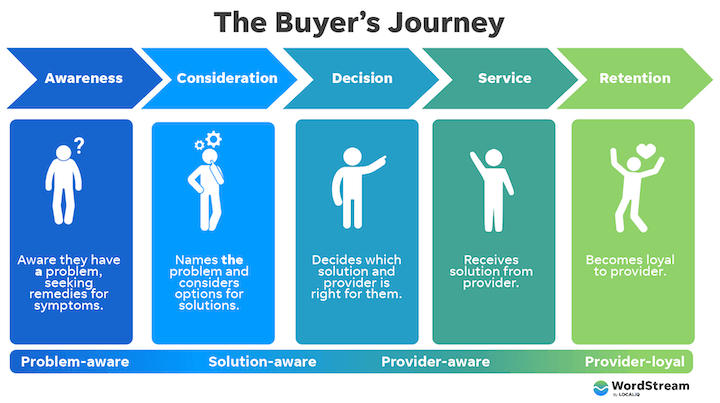
Attract
As the first stage of the inbound marketing funnel, attracting quality traffic to your website is crucial. Visitors at this stage are actively searching for a product or service that meets their needs and solves their pain points. Here are three key components to help generate this quality traffic:
Content Creation: Develop engaging content that addresses visitors’ pain points, such as product checkout, research, costs, and more. Various forms of content can be created at this stage, including blog posts, social media updates, e-books, and infographics.
SEO Strategy: Implement a robust SEO strategy to enhance your content and drive more web traffic. This involves identifying relevant keywords for your products and services, understanding the value these products offer to customers, and optimising your content with meta descriptions. An effective SEO strategy ensures your content reaches the search engine results page and is more visible to visitors.
Social Media Marketing: Engage with visitors through social media marketing to attract them to your website. Optimise your social media efforts by attaching share buttons to your content, hosting polls, and including social proof such as customer reviews and comments.
Convert
Once you’ve successfully attracted visitors to your website, the next phase is converting them into leads. This involves collecting their contact information through various methods:
Landing Pages: Create landing pages that offer valuable content such as webinars, e-books, and newsletters to convert visitors into leads.
Contact Forms: Use contact forms to gather essential customer details like phone numbers, emails, and feedback.
Call-to-Action (CTAs): Integrate CTAs on your website to prompt visitors to take specific actions, such as subscribing to newsletters, signing up for services, downloading resources, or requesting a demo.
Close
To effectively convert your leads into customers, follow these three crucial steps within the inbound marketing funnel stages:
Lead Nurturing: Engage your leads with personalised content designed to move them through the buyer’s journey. Utilise engaging emails, drip campaigns, newsletters, blog posts, and retargeting ads to maintain consistent contact and build a relationship. This process, known as lead nurturing, is essential to keep your leads engaged and guide them towards making a purchase.
Marketing Automation Tools: Leverage robust marketing automation tools like Hubspot, Outgrow, Percolate, and Marketo to streamline your lead conversion process. These platforms offer features such as customer journey mapping, engagement tracking, dynamic content, SMS marketing, and email management. Automation tools are invaluable for executing targeted campaigns and managing lead nurturing at scale, ensuring a seamless transition through the inbound marketing phases.
CRM Tools: Employ Customer Relationship Management (CRM) tools to manage and access lead data efficiently. Tools such as Hubspot, Zoho, Pipedrive, Salesflare, and Apptivo provide comprehensive features including content delivery, customer segmentation, lead management, and mobile-optimised emails. These functionalities help you maintain detailed insights into your leads’ behaviours and preferences, facilitating personalised and effective communication strategies.
Delight
The final phase of the inbound marketing funnel focuses on customer retention. Implementing various marketing methods can help ensure your customers remain satisfied and loyal post-purchase:
Social Media Engagement: Maintaining active engagement on platforms like Instagram, Facebook, LinkedIn, and Twitter is crucial. Social media engagement can keep your customers connected to your brand, fostering loyalty and continued interest. Strategies include sharing engaging content, visual posts, Q&A sessions, and consistent updates to maintain a vibrant and interactive presence.
Loyalty Programmes: Establishing loyalty programmes is an effective way to retain customers by making them feel valued. These programmes can offer discounts, loyalty points, exclusive events, and more. By providing tangible rewards, you encourage repeat purchases and build long-term customer relationships.
By meticulously applying these strategies, your B2B inbound marketing funnel will not only convert leads but also ensure they remain loyal customers, optimising the entire process from initial attraction to long-term retention.
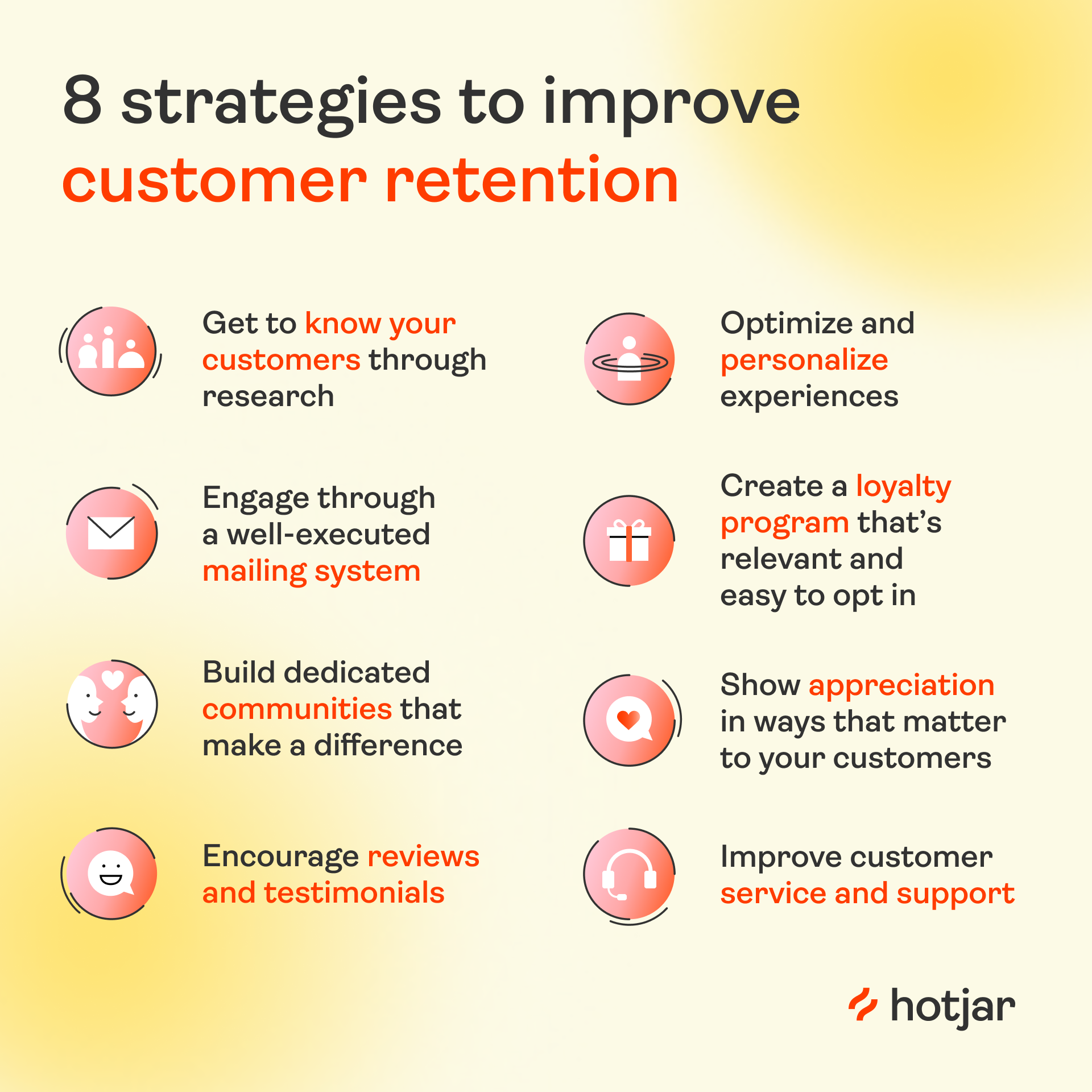
Types of Inbound Marketing
Blogs
Blogs are long-form written content published on your website to provide valuable information. They cover a variety of topics relevant to your products and services. For instance, if your industry involves pet products, a blog topic might be: “10 Camping Tips with Your Dog”.
During the summer camping season, such a post targets individuals planning to camp with their dogs. Once they visit your blog, they might be enticed to purchase related dog products. Blogs are incredibly effective in attracting audiences. Websites with blogs generate approximately 67% more leads than those without. Different types of blogs can be created depending on your goals, ensuring they are relevant, content-rich, and engaging.
SEO
Having a blog is just the first step; driving traffic to it is crucial. This is where Search Engine Optimisation (SEO) plays a vital role. SEO ensures your website ranks on the first page of search engine results, making your content more visible than your competitors’.
Implementing SEO involves various front-end and back-end strategies, primarily focused on keyword research. By identifying and using popular search terms within your content, you can significantly improve your website’s visibility. SEO isn’t limited to blogs; optimising your LinkedIn profile can also drive substantial traffic, as LinkedIn is considered a trusted source by Google’s algorithm, often ranking highly in search results.
Source: Hubspot
Videos
According to Aberdeen Group, marketers who utilise video-based content generate 66% more qualified leads than those who don’t. Videos are more engaging than text-based content and can cover a wide range of topics, from tutorials and explainer videos to brand films and testimonials.
Videos offer next-level possibilities, such as immersive 360° experiences. They are also excellent for product demos and walkthroughs, providing a visual and interactive way to showcase your offerings.
Landing Pages
Creating value-driven content for landing pages is a powerful inbound marketing strategy. These pages can serve as lead magnets, converting visitors into leads by capturing their contact details in exchange for valuable downloadable material.
Consider creating multiple landing pages to cater to different buyer personas. This personalised approach increases the likelihood of obtaining detailed contact information from various segments of your audience.
Research and Thought Leadership Reports
Producing research and thought leadership reports involves creating rigorously researched, tightly focused content. This process might include conducting surveys, gathering data, analysing it, and drawing conclusions.
Such reports provide unique value, often delivering information not readily available elsewhere. This not only attracts a significant influx of visitors but also encourages backlinks to your content, enhancing its reach and authority.
Podcasts and Webinars
While other content types are valuable, podcasts and webinars take engagement to another level by being interactive. They add a “human” touch, showcasing your personality and making the content feel more genuine and personal.
Podcasts and webinars allow for two-way interaction, making your audience feel special and connected, especially when you engage them by answering questions or conducting polls.
By incorporating these types of content into your inbound marketing strategy, you can create a comprehensive and engaging experience that effectively attracts, converts, and retains customers. This approach ensures your inbound marketing funnel stages are robust and effective, driving significant growth and engagement.
Our Tactical Recommendations
From our experience, clients often find success by leveraging marketing automation to manage and personalise interactions at scale, ensuring leads are nurtured effectively throughout the funnel. Typically, the most impactful results come from optimising calls to action (CTAs) strategically placed within your content to guide leads through the funnel. Additionally, using content upgrades as lead magnets at different stages often captures more qualified leads, driving higher engagement and conversion rates.Get In Touch
How to Build an Effective B2B Inbound Marketing Funnel in 4 Steps
Building a robust B2B inbound marketing funnel involves a strategic approach across various stages to ensure seamless lead conversion and customer retention. Here are four essential steps to create an effective inbound marketing funnel:
Create a Buyer Persona
To construct an effective inbound marketing funnel, the first step is to identify your target audience by creating a detailed buyer persona. This persona should encompass your prospects’ demographics, product interests, pain points, goals, and purchasing behaviour. You can gather this information through methods such as surveys, reviewing customer transaction history, or web tracking.
A comprehensive buyer persona allows you to segment your customer base effectively, tailor personalised content, and collect quality leads, ultimately improving your products and services.
Build a Customer-Specific Landing Page
Next, build a landing page that addresses your prospects’ specific pain points and goals. An effective landing page should include the following elements:
- Specific information about your products and services
- Visual content to engage visitors
- Clear Call-to-Action (CTA) buttons
- A/B testing to optimise performance
- Mobile-friendly design
- Simple navigational interface
Utilise landing page builder tools such as Hubspot, Ucraft, Shortstack, GetResponse, and others to create a well-designed landing page that enhances lead conversion.
Generate Quality Traffic
Generating quality traffic is a crucial component of your inbound marketing funnel stages. Implement the following strategies to drive traffic into your funnel:
- Promote your content on social media platforms
- Include images in your social snippets to increase engagement
- Personalise your content, including blog posts, social media updates, and newsletters
- Use targeted ads to reach specific audiences
- Share customer testimonials on social media to build trust
- Craft eye-catching email subject lines
- Introduce lead magnets to attract prospects
- Send out weekly newsletters to keep your audience engaged
- Create social media groups to foster community and engagement
Source: Hubspot
Set Up a Drip Campaign
Finally, implement a drip campaign to send automatic emails to your leads and customers over a set period. Different types of drip campaigns include welcome emails, retargeting, abandoned cart reminders, post-purchase follow-ups, and subscription renewals.
Drip campaigns offer numerous benefits such as enhanced customer engagement, improved customer retention, effective lead nurturing, personalised content delivery, and increased customer loyalty. Use email marketing tools like Mailchimp, ActiveCampaign, Omnisend, and Flodesk to efficiently manage and execute your drip campaigns.
What common reasons can cause my inbound marketing funnel to fail?
An inbound marketing funnel can sometimes fail due to various reasons. Understanding these pitfalls is crucial for creating a robust and effective strategy. Here are five common reasons why inbound marketing funnels can falter and how to address them.
Overcomplicated Sales Funnel
An overly complicated inbound marketing funnel with numerous variables and unfocused goals can hinder the smooth transition of leads through the funnel stages. This complexity can delay the delivery of critical information to your leads.
Solution: Streamline each stage of your inbound marketing funnel by simplifying processes and ensuring clear, focused goals. Enhance visitor attraction through engaging social media platforms like Facebook, Instagram, and LinkedIn.
Lack of Consideration for External Influences
Failing to account for external influences such as competitors, social media trends, or organic algorithm updates can disrupt your inbound marketing funnel.
- Competitors: Consumers can easily access alternative products and services online. Combat this by implementing loyalty programmes offering discounts and exclusive deals.
- Organic Algorithm Updates: Changes in search engine algorithms can impact your web traffic. Counteract this by regularly optimising your keywords, using effective CTAs, building quality backlinks, and analysing your competitors’ content strategies.
- Social Media Influence: Inactivity or lack of influence on social media platforms can affect the buyer’s journey. Increase your social media impact by conducting polls, sharing engaging and shareable content, and offering rewards.
Inadequate Buyer Persona
Not creating a detailed buyer persona or using a broad one can negatively impact lead conversion. Without essential customer information such as demographics, pain points, and purchasing behaviour, it becomes challenging to create targeted content.
Solution: Develop comprehensive buyer personas by gathering detailed information about your prospects. This helps tailor your content to meet the specific needs and interests of your target audience.
Poorly Designed Landing Pages
A poorly designed landing page that lacks clarity, specificity, or engagement can significantly reduce lead conversion rates. Key factors contributing to ineffective landing pages include:
- Limited and broad information about your products and services
- Absence of CTA buttons
- Use of jargon
- Slow loading times
- Lack of mobile-friendly design
Solution: Ensure your landing pages are clear, specific, and engaging. Incorporate strong CTAs, eliminate jargon, optimise loading times, and ensure mobile compatibility.
Slow Email Response Times
Delays in responding to customer emails can adversely affect your lead nurturing process, potentially losing valuable leads.
Solution: Improve your response times by integrating email auto-responders, using ready-made email templates, and establishing a clear email response policy. This ensures timely and efficient communication with your leads, enhancing the nurturing process.
Inbound Marketing Demands Time
Executing an inbound marketing strategy requires a significant investment of time and patience. It is not a quick solution; there’s no single action that will instantly generate a surge of consumers and leads. Careful planning is essential to create, attract, convert, close, and delight prospects and customers through the inbound marketing funnel stages.
Search Engine Optimisation (SEO)
SEO requires a well-optimised website, reliable analytics, a comprehensive sitemap, a strong backlink strategy, and continuous adjustments. While SEO is a highly effective marketing method, it necessitates ongoing effort and patience to see significant results.
Social Media Marketing
Marketing via social media requires significant effort and dedicated personnel to manage social media accounts. Building relationships that lead to business deals takes time and consistent effort. To successfully sell on social media, significant time must be invested in developing and nurturing these connections.
Insufficient Tools and Resources
Selecting the right tools for lead generation and communication management throughout the sales process is crucial. Without suitable tools, running an effective inbound marketing campaign is nearly impossible. Using improper software or trying to handle all tasks manually can drain resources and limit success.
Solution: Invest in scalable tools and technology that allow you to implement your strategy efficiently, enabling you to achieve more in less time.
Misalignment Between Sales and Marketing
There is often a disconnect between marketing and sales teams on what qualifies as a quality lead. If the marketing team attracts leads that the sales team considers unsuitable, conversion rates will be negatively impacted.
Solution: Align sales and marketing strategies before commencing inbound marketing campaigns. This involves:
- Defining the ideal prospect (buyer persona) by understanding their preferences, dislikes, biases, and needs.
- Identifying the problems that prompt individuals to seek solutions and invest in resolving them.
- Providing educational content that answers their questions and demonstrates how your solution addresses their problems.
By addressing these common issues, you can optimise your B2B inbound marketing funnel to function effectively and efficiently through all inbound marketing phases.
